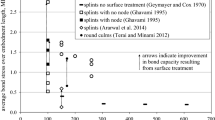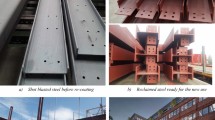Abstract
The modular system is a very efficient construction method with various strengths and advantages that is expected to replace Reinforced Concrete (RC) or steel (S) structures. It is appreciated as a faster, more efficient, cheaper, and eco-friendly method capable of solving labor problems in the construction industry. However, the modular system has in fact failed to meet expectations in the Korean construction market, mainly due to higher construction costs as compared to RC structures. This study, therefore, sought to derive the construction cost-increasing factors for each phase of a modular project in Korea then analyzed what improvements should be made to secure economic feasibility. For the purpose of this study, the Failure Mode and Effects Analysis (FMEA) method was employed to find critical factors responsible for causing cost increases throughout the modular construction life-cycle from the perspective of the modular construction company. A total of 35 types are evaluated, which increased to 49 factors when overlapping is allowed over the phases. The result of the FMEA shows that there is a higher risk of a construction cost increase at the beginning of the design phase, highlighting the importance of initial planning and direction setting. It also demonstrates that workforce-related problems take up about half of the risk factors, indicating that the Korean modular construction industry needs well trained and experienced specialists. The results further imply that many of the serious risks of cost increases come from factors relating to market size and the maturity of modular construction, which the modular construction companies can’t control on their own. More publicity detailing the advantages and superiority of the system, its technical improvement and innovation in terms of quality and performance, could change customer interest in the system. These efforts should run parallel with the effort to lower costs.
Similar content being viewed by others
References
Bae, B. Y., Kim, K. R., Cha, H. S., and Shin, D. W. (2012). “To improve production process of the modular using the conveyor system.” Korean Journal of Construction Engineering and Management, Vol. 13, No. 5, pp. 103–112, DOI: 10.6106/kjcem.2012.13.5.103.
Choi, K. S. and Kim, H. J. (2014). “Analytical models of beam-column joints in a unit modular frame.” Journal of the Computational Structural Engineering Institute of Korea, Vol. 27, No. 6, pp. 663–672, DOI: 10.7734/COSEIK.2014.27.6.663.
Elinwa, A. and Buba, S. (1993). “Construction cost factors in nigeria.” Journal of Construction Engineering and Management, Vol. 119, No. 4, pp. 698–713, DOI: 10.1061/(ASCE)0733-9364(1993)119:4(698).
Hong, S. G. (2014). “Structural design guidelines for middle to high-rise modular buildings for architects and engineers.” Review of Architecture and Building Science, Vol. 58, No. 5, pp. 15–19.
Kim, B. Y. and Kim, Y. S. (2012). “The analysis of the major cost-increasing risk factors from the perspective of construction management-focusing on pre-construction phases.” Korean Journal of Construction Engineering and Management, Vol. 13, No. 2, pp. 147–155, DOI: 10.6106/kjcem.2012.13.2.147.
Kim, D. M., Lee, J. S., Kim, J. H., and Kim, J. J. (2014). “Marketing strategy and influential factors based on the attributes of unit modular system.” Korean Journal of Construction Engineering and Management, Vol. 15, No. 1, pp. 78–86, DOI: 10.6106/kjcem.2014. 15.1.078.
Kim, H. C., Hwang, Y. K., and Kim, K. R. (2014). “Study on the application of multi-skilled labors to factory production process for securing economic feasibility of modular unit.” Korean Journal of Construction Engineering and Management, Vol. 15, No. 1, pp. 11–19, DOI: 10.6106/kjcem.2014.15.1.011.
Kim, K. T. and Lee, Y. H. (2011). “Economic feasibility study on the unit modular fabrication method according to the life cycle costing methodology.” Journal of Architectural Institute of Korea Structure & Construction, Vol. 27, No. 12, pp. 207–214.
Kim, K. T., Kim, C. H., Lee, D. H., and Lee, Y. H. (2011). “Development of a korean modular housing construction scenario.” The Korea Institute of Building Construction, Vol. 11, No. 1, pp. 81–83.
Kim, K.-K. and Kim, H.-S. (2007). “A study for major cost-increasing factors in skyscraper construction using FMEA.” Journal of the Architectural Institute of Korea, Structure & Construction, Vol. 23, No. 5, pp. 175–176.
Kim, T. Y., Park, M. S., Lee, H. S., and Shu, S. W. (2013). “Optimization methodology of modular unit factory production process using DSM.” Journal of the Architectural Institute of Korea, Structure & Construction, Vol. 29, No. 6, pp. 113–122.
Lawson, R. M., Ogden, R. G., Pedreschi, R., Grubb, P. J., and Popo-Ola, S. O. (2005). “Developments in pre-fabricated systems in light steel and modular construction.” Institution of Structural Engineers, Vol. 83, No. 6, pp. 28–35.
Lawson, R., Ogden, R., and Bergin, R. (2012). “Application of modular construction in high-rise buildings.” Journal of Architectural Engineering, Vol. 18, No. 2, pp. 148–154, DOI: 10.1061/(asce) ae.1943-5568.0000057.
Lee, D. H. and Kim, K. T. (2013). “A fundamental study for applying of Unit modular housing production system in the domestic.” Korean Journal of Construction Engineering and Management, Vol. 14, No. 5, pp. 3–11, DOI: 10.6106/kjcem.2013.14.5.003.
Lee, K. B., Kim, K. R., Shin, D. W., and Cha, H. S. (2011). “A proposal for optimizing unit modular system process to improve efficiency in off-site manufacture, transportation and on-site installation.” Korean Journal of Construction Engineering and Management, Vol. 12, No. 6, pp. 14–21, DOI: 10.6106/kjcem.2011.12.6.14.
Lim, S. H., Kim, H. K., and Kim, Y. S. (2014). “Development of consumer customized prefabricated housing and construction of filed-test.” Korea Institute of Civil Engineering and Building Technology.
Memon, Aftab Hameed, Rahman, Ismail Abdul, Abdullah, Mohd Razaki and Azis, Ade Asmi Abdu (2014). “Factors affecting construction cost performance in project management projects: Case of MARA large projects.” International Journal of Civil Engineering and Built Environment, Vol. 1, No. 1, pp. 30–35.
Modular Building Institute (2011). Permanent Modular Construction 2011 Annual Report.
Noh, S. Y. (2006). “Delphi technique: Future prediction with technical insight.” Korea Research Institute For Human Settlements, KRIHS Report, No. 299, pp. 53–62.
Pillay, A. and Wang, J. (2003). “Modified failure mode and effects analysis using approximate reasoning.” Reliability Engineering & System Safety, Vol. 79, No. 1, pp. 65–85, DOI: 10.1016/S0951-8320(02)00179-5.
Pyzdek, T. (2003). The six sigma Handbook, McGraw-Hill, pp. 590–600.
Rogan, A. L., Lawson, R. M., and Bate-Brkljac, N. (2000). “Value and benefits assessment of modular construction.” The Steel Construction Institute.
The Steel Construction Institute (2000). “Value and benefits assessment of modular construction”.
Yoo, W.-H., Hyun C.-T., Moon, H.-S., and Kim, J.-H. (2011). “Contractual risk evaluation model for international construction projects using FIDIC Silver Book.” Journal of the Architectural Institute of Korea, Structure & Construction, Vol. 27, No. 11, pp. 165–166.
Yoon, J. S., Shin, D. W., Cha, H. S., and Kim, K. R. (2015). “A business model for application of the modular building in the rental market.” Journal of Korean Construction Engineering and Management, Vol. 16, No. 6, pp. 3–11, DOI: 10.6106/kjcem.2015.16.6.003.
Yu, M., Oh, J. W., Lee, M. H., Yu, Y. D., and Park, T. K. (2005). “A Study on Analyzing the duration of modular construction method.” Architectural Institute of Korea, Vol. 25, No. 1, pp. 201–204.
Zheng, S. L., Kang, J. W., and Park, S. M. (2008). “A study on the constructability of modular steel frame.” Journal of the Korean Association for Shell and Spatial Structures, Vol. 8, No. 4, pp. 65–71.
Author information
Authors and Affiliations
Corresponding author
Rights and permissions
About this article
Cite this article
Lee, JS., Kim, YS. Analysis of cost-increasing risk factors in modular construction in Korea using FMEA. KSCE J Civ Eng 21, 1999–2010 (2017). https://doi.org/10.1007/s12205-016-0194-1
Received:
Revised:
Accepted:
Published:
Issue Date:
DOI: https://doi.org/10.1007/s12205-016-0194-1




